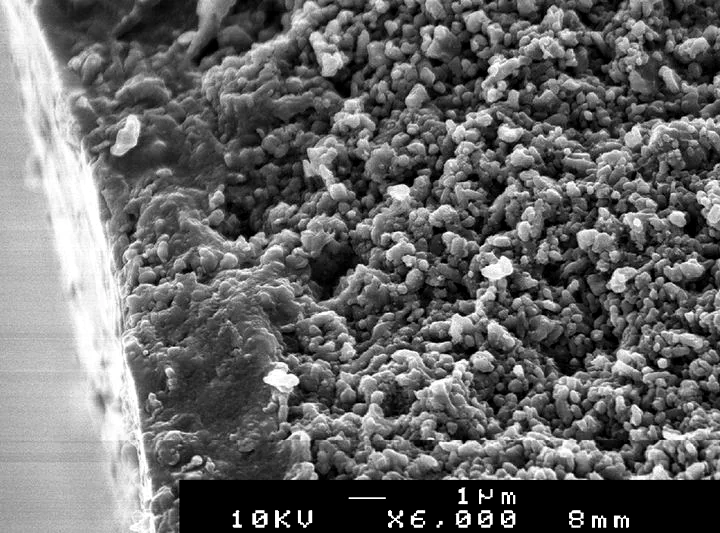Cobalt-doped silica membranes for gas separation
Jan 20, 2009·
,
 ,
·
0 min read
,
·
0 min read
D. Uhlmann
S. Liu
Prof. Dr. Bradley P. Ladewig
J. C. Diniz Da Costa

Abstract
Cobalt-doped silica membranes were synthesized using tetraethyl orthosilicate-derived sol mixed with cobalt nitrate hexahydrate. The cobalt-doped silica structural characterization showed the formation of crystalline Co3O4 and silanol groups upon calcination. The metal oxide phase was sequentially reduced at high temperature in rich hydrogen atmosphere resulting in the production of high quality membranes. The cobalt concentration was almost constant throughout the film depth, though the silica to cobalt ratio changed from 33:1 at the surface to 7:1 at the interface with the alumina layer. It is possible that cobalt has more affinity to alumina, thus forming CoOAl2O3. The He/N2 selectivities reached 350 and 570 at 160 °C for dry and 100 °C wet gas testing, respectively. Subsequent exposure to water vapour, the membranes was regenerated under dry gas condition and He/N2 selectivities significantly improved to 1100. The permeation of gases generally followed a temperature dependency flux or activated transport, with best helium permeation and activation energy results of 9.5 × 10−8 mol m−2 s−1 Pa−1 and 15 kJ mol−1. Exposure of the membranes to water vapour led to a reduction in the permeation of nitrogen, attributed to water adsorption and structural changes of the silica matrix. However, the overall integrity of the cobalt-doped silica membrane was retained, given an indication that cobalt was able to counteract to some extent the effect of water on the silica matrix. These results show the potential for metal doping to create membranes suited for industrial gas separation.
Type
Publication
Journal of Membrane Science